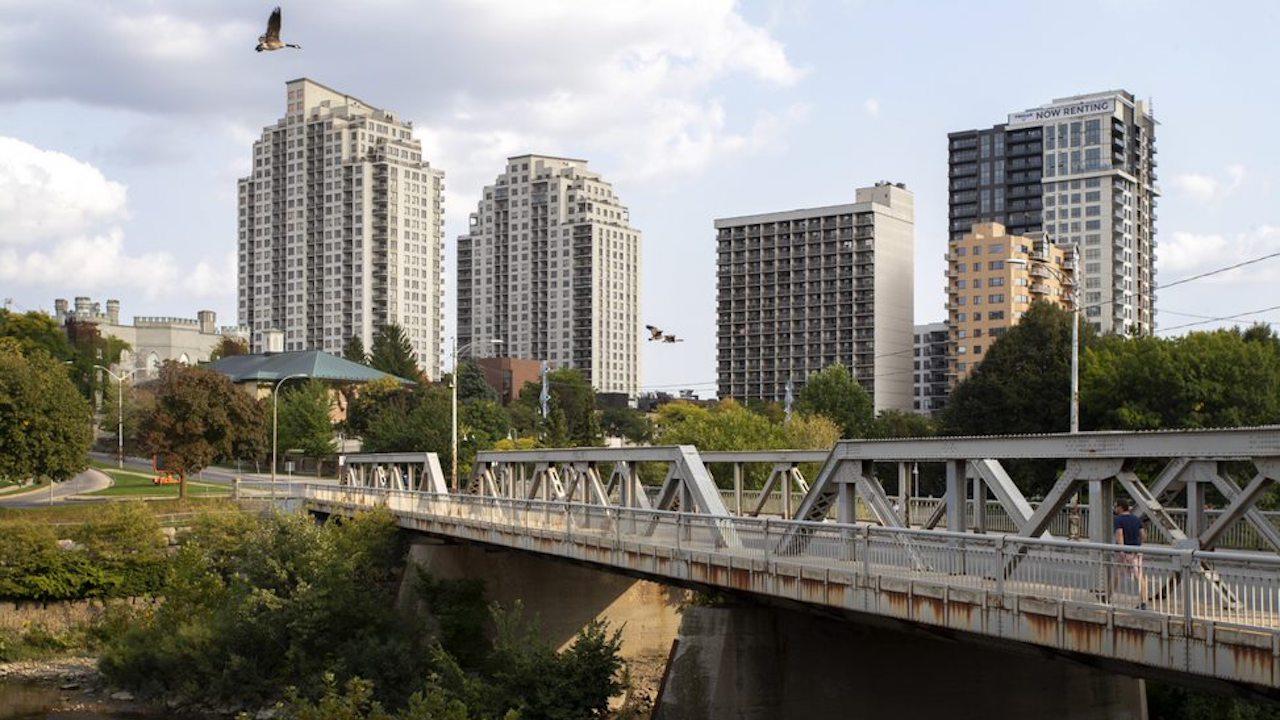TVO: The case for — and against — rental licensing in Ontario
Posted March 18, 2021
Posted March 18, 2021
 LONDON — Earlier this month, London’s community-protective-services committee hosted an online public meeting about how to improve protections against substandard housing — and renters logged on to share their encounters with mouldy bathrooms and chronic pest infestations.
LONDON — Earlier this month, London’s community-protective-services committee hosted an online public meeting about how to improve protections against substandard housing — and renters logged on to share their encounters with mouldy bathrooms and chronic pest infestations.
The March 2 meeting sought feedback on proposed changes to property-standards enforcement and a letter from city councillors Arielle Kayabaga and Mo Salih that called for the expansion and retooling of London’s residential rental-licensing program. The councillors want the program, currently applied primarily to student housing, to cover most of the city’s rental stock. “The issue is not about landlords,” said Kayabaga. “It’s specifically about … the rights to tenants to have safer environments to live in.”
From Ottawa to Windsor, communities throughout Ontario are taking a hard look at rental licensing as a way to address concerns about substandard housing. “Our system right now, generally speaking, relies on tenant complaints [to trigger action],” says Erica Phipps, director of RentSafe, a national initiative to address unhealthy housing conditions: “It simply does not work — nor is it ethically justifiable — to place the burden of raising concerns about housing conditions on the back of our society’s most marginalized people.”
What are Ontario’s rental-housing standards — and who enforces them?
Under Ontario’s Residential Tenancies Act, a landlord has an obligation to ensure that a rental unit is in a good state of repair, fit for habitation, and complies with applicable standards, such as property standards (for instance, those that address a building’s structure). The legislation “creates a baseline to ensure that no rental units are supposed to fall below,” says Matt Helfand, a municipal lawyer at the Toronto firm Aird & Berlis LLP.
At the provincial level, the Landlord and Tenant Board, a quasi-judicial authority, adjudicates disputes, including maintenance and repair issues. Locally, municipalities can also enforce standards through property-standards bylaws. These can contain requirements that go beyond what is outlined in the provincial legislation.
In theory, the system should address most situations, Helfand says. But it hinges, in the case of the LTB, on tenants’ awareness and understanding of their rights and on their ability to make an application. If they can’t, he says, “then sometimes these things might go unaddressed.”
The Municipal Affairs and Housing website has information about renting and related legal information, a ministry spokesperson says by email. More resources can be found on the LTB website. “In addition, for most new tenancies the parties are required to use a standard form tenancy agreement which contains information about the rights and obligations of landlords and tenants,” a Tribunals Ontario spokesperson tells TVO.org via email.
How does rental licensing work?
In their letter, the two London councillors propose expanding licensing to townhouses and apartment buildings and introducing random inspections and an anonymous-complaint system for tenants. (Current licensing applies to smaller or converted buildings, and proactive inspection takes place only as part of the initial licence application.)
This approach resembles the RentSafeTO registration system. Established in Toronto in 2017, RentSafeTO consolidates apartment standards under one program “to make it easier to communicate bylaw requirements to building owners and help tenants understand their rights,” a city spokesperson says via email. Owners of apartment buildings with more than 10 units, or three storeys, are required to register. Currently, 3,472 buildings are registered.
Properties must meet enhanced standards that include requirements to develop plans for capital for major building repairs, electrical maintenance, cleaning, and waste management. Buildings are audited once every three years. The program also requires landlords to post information — such as building-maintenance notices and recent city-issued notices and orders — in a central location. Fees paid by landlords to register their buildings recoup the costs of the program, which has dedicated staff and, in 2021, a gross budget of about $3.8 million.
What do proponents say?
A landlord registry helps “address the gaps in our current property standards system; to ensure that everyone’s right to housing is protected and that every tenant has a healthy home,” an Ottawa chapter of the Association of Community Organizations for Reform Now Canada, or ACORN, wrote in a 2019 submission to Ottawa council. The organization has been closely involved in the push for registries in several Ontario communities, including London and Toronto.
Councillor Jesse Helmer, who chaired the London committee meeting, describes property licensing as a form of “consumer protection” for renters and a way of “making sure that there’s a decent standard of living out there for people no matter what kind of building they’re renting in.”
What could go wrong?
Lisa Smith, past president of the London Property Management Association, says that tenants could end up paying for the costs of licensing — a concern that helped sink the 2019 bid for such a program in Ottawa. Joe Hoffer, the association’s lawyer, says that one Waterloo landlord was able to increase rent 6.8 per cent after licensing charges were introduced in that city.
In Ontario, annual rent increases for most older residential rental units occupied prior to November 2018 are capped in line with the Ontario Consumer Price Index, which measures inflation and, in 2020, was 2.2 per cent. Landlords, however, can apply to the LTB to make above-guideline increases to help cover costs such as those related to capital work or to an “extraordinary” increase in municipal taxation. (The province has frozen rents at 2020 levels and suspended the municipal-tax increases category for 2021 because of the pandemic.)
Some London city councillors are concerned about the demand on resources and the estimated multi-million-dollar price tag that could come with a rental-licensing program. “Will there be enough bylaw enforcement officers to cover off the licensing, the bylaw inspections?” asks Councillor Phil Squire. “We would be spending 3 million dollars before we killed one cockroach,” Councillor Michael van Holst said at the March 2 meeting.
Participants in a recent Wellesley Institute research project on Toronto rental-housing conditions noted that inspections under the RentSafeTO program “are not addressing all issues, likely because resources remain modest, compared to the scale of the problem” and because many of its components — such as “widespread” building-condition audits — haven’t yet been implemented.
Kyle says the program has been successful, noting that, since its launch, nearly every building has undergone at least one evaluation. And, since the program began in 2017 to the end of 2020, the average evaluation score of all buildings has risen 10 points from 66 per cent to 76 per cent.
What else could be done to improve substandard housing?
Kate Murray, who led the Wellesley Institute research project, says she’d like to see the federal government step in with financing programs for private rentals because housing stock is aging and retrofits are prohibitively expensive — $60 million for one 565-unit building in Toronto, according to Wellesley research. Funding available from such places as the Canada Mortgage and Housing Corporation is generally “not geared toward the private sector; it’s geared toward social housing,” she says. “The federal government gave the money either through good tax reductions or cheap loans in the 1960s to build these units; they need to step up.”
A spokesperson for CMHC notes that landlords can receive assistance under the National Housing Co-Investment Fund. The program is providing up to $4.5 billion in forgivable loans and $8.7 billion in low-interest, repayable loans for “energy efficient, accessible and socially inclusive housing for mixed-income, mixed-tenure and mixed-use affordable housing uses,” according to CMHC’s website. Programs that finance the preservation of affordable units, assist with refinancing, and provide refunds for energy-efficiency improvements, they add, can help support major repairs for multi-unit rentals.
Phipps says that policy changes to better coordinate supports and enforcement are key. So, too, she adds, is fostering an understanding of healthy housing as a human right: “Right now, housing is viewed as something to be earned and deserved.”
In London, committee members have sent the proposal to city staff to research and cost out. They’ve also asked staff to look into establishing a landlord-and-tenant task force to develop an action plan. A task force “gives us a chance to continue the conversation,” says Shawn Lewis, the councillor who proposed it. “By getting the problems identified, then we can start to work on solutions.”
***
Article by Mary Baxter for TVO
